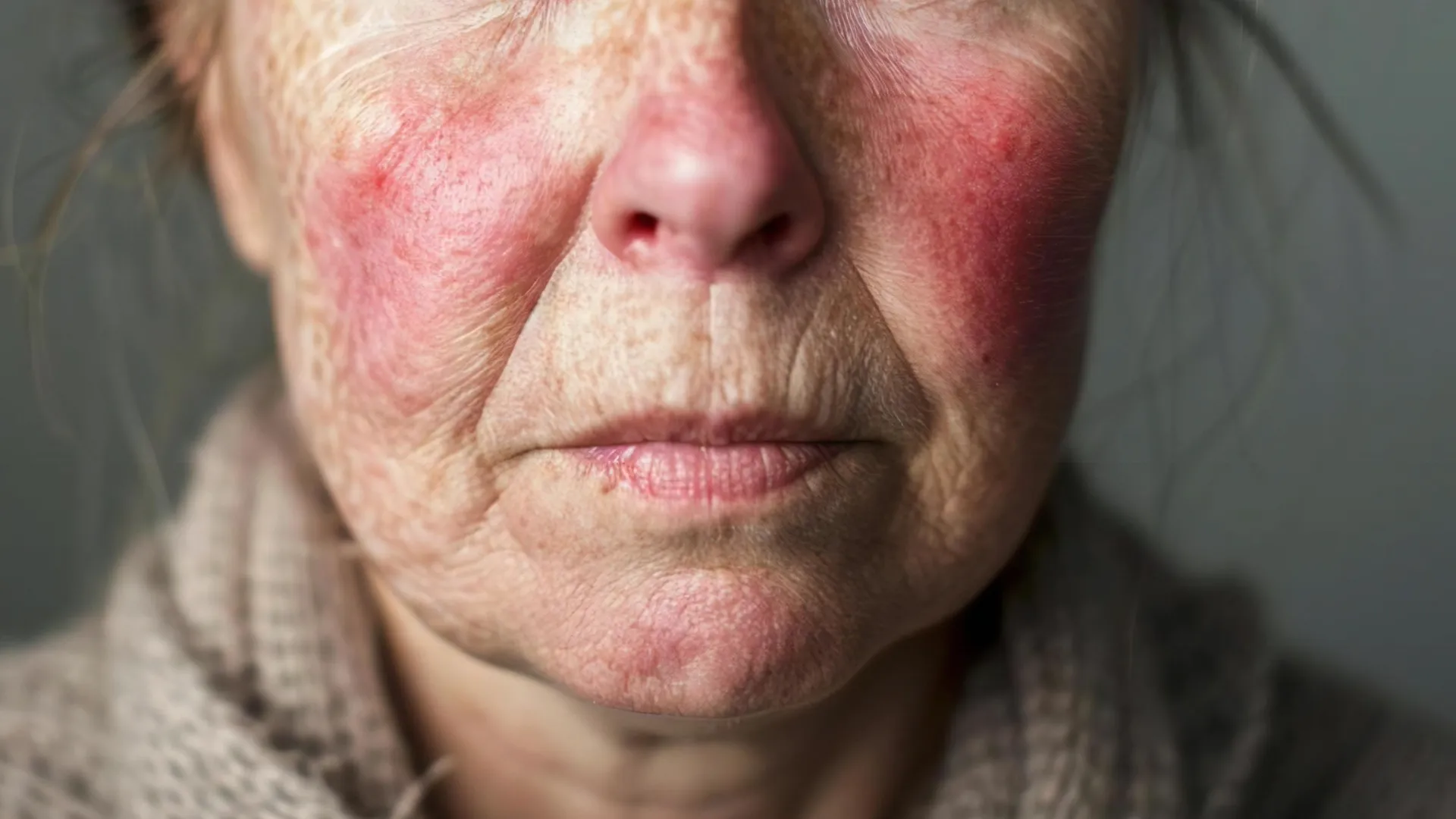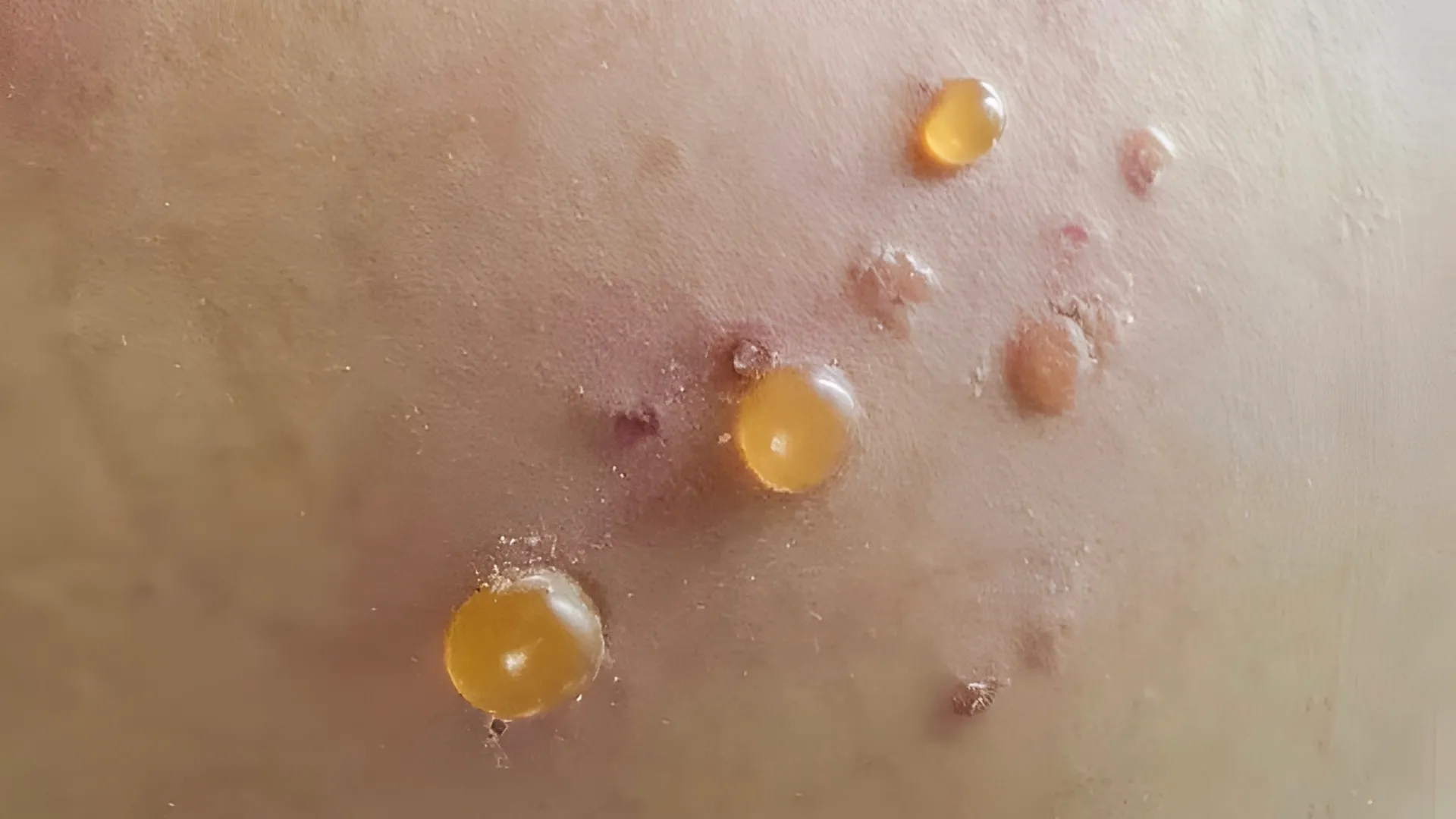Scleroderma
Scleroderma is a rare autoimmune condition of the connective tissue, characterized by excessive collagen formation. This leads to the hardening of the skin and connective tissues. The condition can be localized or systemic, affecting internal organs such as the heart, lungs, kidneys and digestive tract.
Types
- Localized form: More common in adults aged 30-50, with a preference for women.
- Morphea: Characterized by oval plaques sometimes with erythematous borders.
- Linear scleroderma: A linear sclerotic lesion appears on the extremities or forehead.
- Systemic form: Affects not only the skin but also internal organs.
Symptoms
- Dermatological signs: Affected areas of the skin typically show thickened or atrophic plaques. Common locations include the fingers, hands, face and torso.
- Raynaud’s phenomenon: An exaggerated response to low temperatures or stress, causing color changes in the fingers (alternating between white, blue and red).
- Systemic symptoms: Difficulty swallowing, gastroesophageal reflux and issues related to the heart, lungs and kidneys.
Diagnosis
- Medical history: A thorough review of symptoms and family history.
- Physical examination: Inspection of the skin for signs of thickening or color changes. A check for Raynaud’s phenomenon may also be performed.
- Blood tests: Testing for specific antibodies (such as anti-Scl-70 and anti-centromere) can help confirm the diagnosis and assess the risk of systemic involvement.
- Skin biopsy: A small sample of skin may be taken for microscopic examination to look for characteristic changes associated with scleroderma.
Treatment
- Topical steroids: For skin lesions.
- Systemic steroids: In more severe cases.
- Immunosuppressive medications:
- D-Penicillamine and nifedipine: To prevent vascular contractions (Raynaud’s).
The diagnosis and treatment of the systemic disease require collaboration with physicians from various specialties, such as gastroenterologists, cardiologists and pulmonologists.

